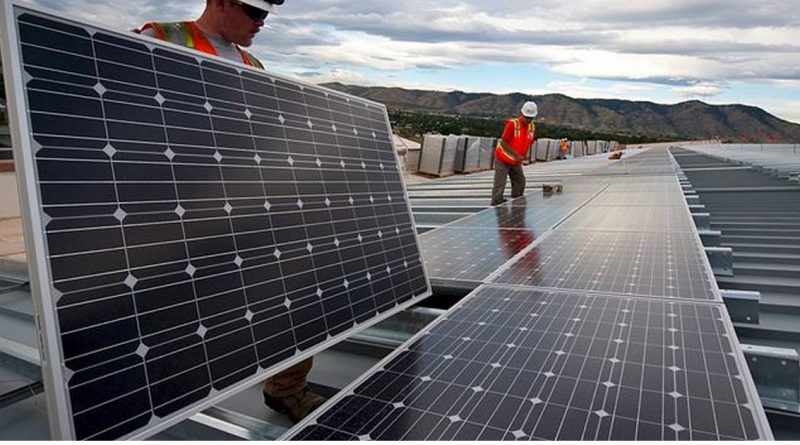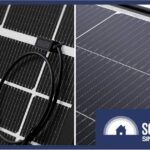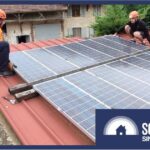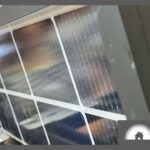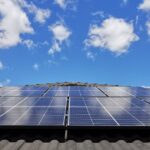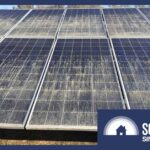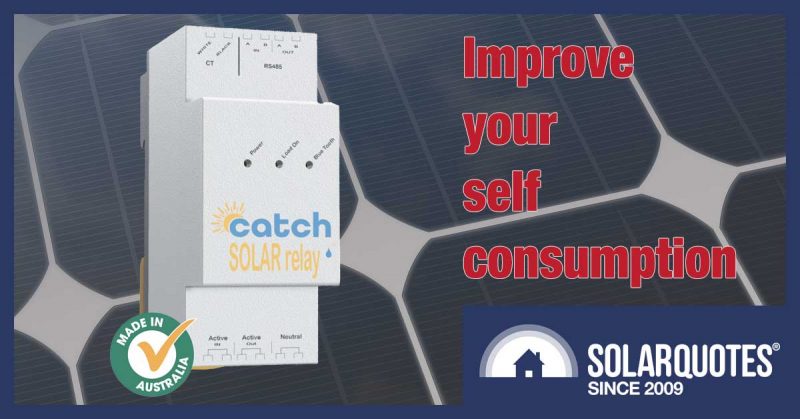Solar Panels: Handle With Care
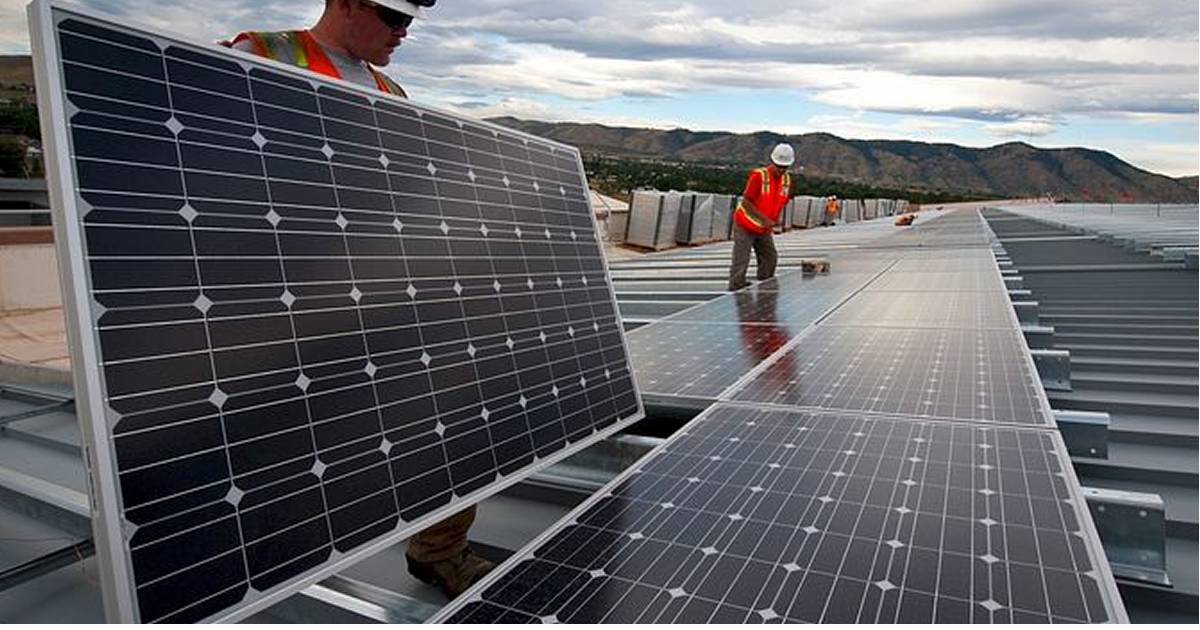
Most solar panels installed in Australia have traveled thousands of kilometres from factory to rooftop. The last few dozen metres of that journey can make a difference to a panel’s performance.
Solar panels aren’t the easiest thing to handle. Unwieldy and around 18-20 kilograms each, it’s a significant weight at the best of times. Add to that the challenges of getting modules up onto a roof, throw in a bit of wind and it’s not only difficult but dangerous work too.
Once a good quality panel is properly installed, it can handle (most of) what nature can throw at it for decades, but the improper handling of a solar panel just prior to installation and how it’s treated afterwards can irreversibly impact its output – and in some cases shorten its service life considerably.
Blair Pester, Asia Pacific Sales Manager for solar panel manufacturer Winaico, often wondered how much impact improper handling had on panel performance. So the Winaico team ran some tests and from that exercise developed a guide detailing how a solar panel is handled can affect power output.
Carrying Solar Panels
Winaico says these are the wrong ways to carry solar panels – and notes the power loss that resulted from doing so. While not a huge amount, every watt counts and damage can worsen over time.
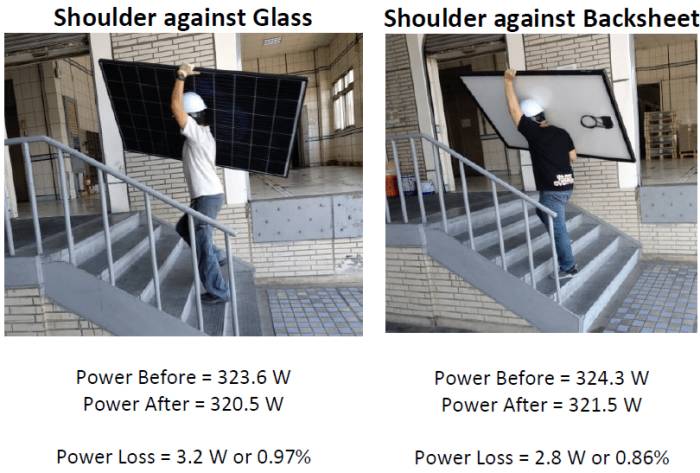
And here’s how Winaico says is the right way to do it, as demonstrated by Sam Craft from NRG Solar in Adelaide.
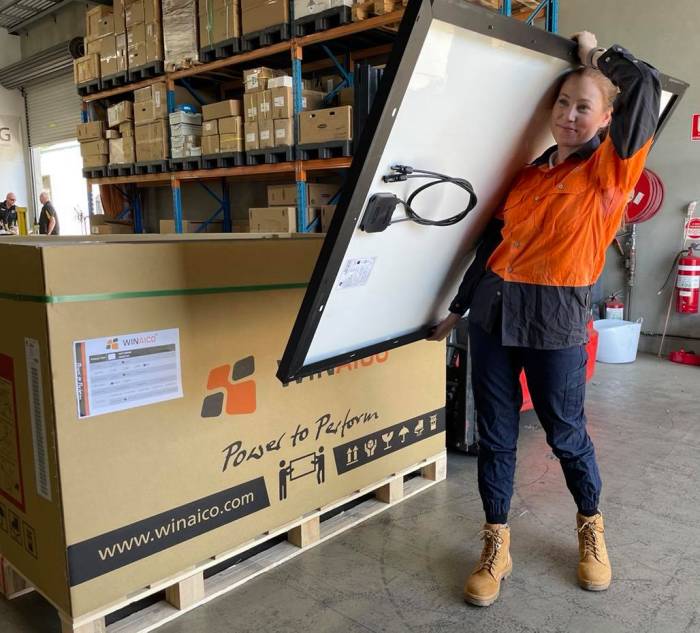
The module rests against the arm, shoulder, back and head as much as possible to distribute the load rather than it being focused on one spot. But where it can be avoided, the backsheet should have no pressure applied at all.
Getting Panels Onto A Roof
When moving modules onto a roof ready for installation, a purpose-built lift is recommended. There are all sorts of weird and wonderful solar panel lifters/hoists on Youtube for doing the job. Some installers go the whole hog and have a truck with a crane. Here’s the truck GCR Electrical Systems uses:
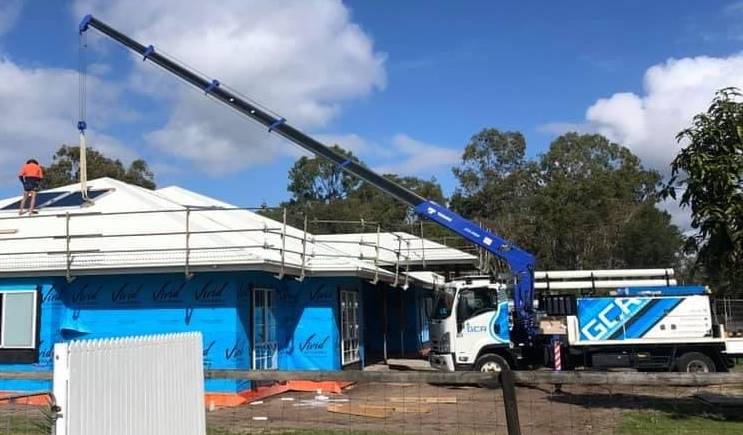
Having a lift/hoist/crane isn’t always possible or convenient, so some installers manually shift solar panels onto a roof using ladders. While the carrying recommendations mentioned above apply, of course one hand won’t be available. Just thinking about carrying solar panels up onto a roof via a ladder when there’s a bit of breeze (or even without it) makes my bowels go all watery – you’d need some pretty good ladder skills.
Standing On Panels
Over the years of writing solar news, I’ve seen many photos of proud owners of new systems (most commonly rooftop commercial PV) *standing* on panels. This is bad – really bad, and I’m sure it sends a shiver down the spines of good installers (and solar panel manufacturers) everywhere.
Using electroluminescence imaging that can reveal defects in crystalline silicon solar cells, Winaico demonstrates the impact of this.

Note the couple of darker cells in the after shot towards the bottom right. Winaico says this suggests the development of microcracks (which often can’t be seen) and resulted in 2.2% power loss. And that’s just initially.
“This would propagate further under the influence of humidity, thermal expansion and contraction and usual wear and tear.”
Another scenario that makes Winaico cringe is where unboxed panels are being carried by a forklift with another hefty component such as an inverter sitting on top.
You can download Winaico’s Recommended Handling Guide here.
Original Source: https://www.solarquotes.com.au/blog/solar-panel-handling-mb1754/

